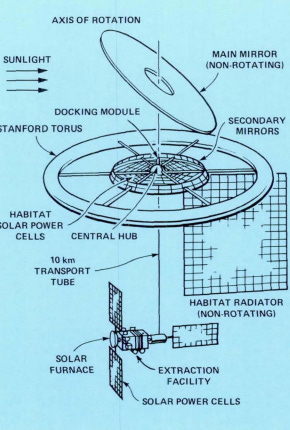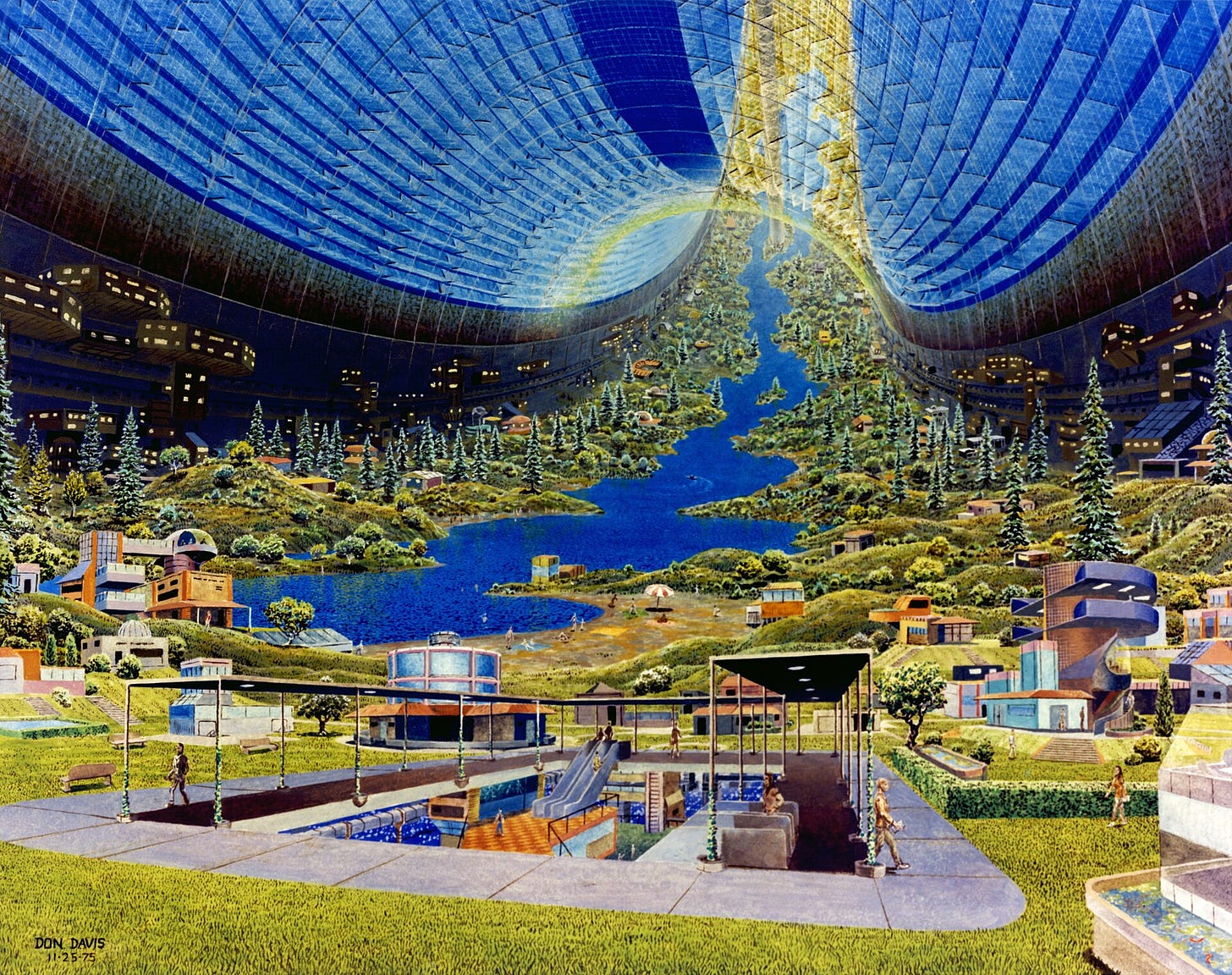Space Settlements of the 1970s
Half a century ago, NASA was willing to fund a detailed study into what it would take to kick off space settlement. How has it held up since then?
In popular science, issues of survival in space are often raised as if they are new or as if they are unknown to space advocates. Things such as radiation and the impacts (or supposed impacts) of low gravity. Critics often fail to acknowledge that there is a long history of working out how to address these problems in the literature. People should be at least somewhat familiar with the work that has already been done before passing such judgement.
In 1975 at Stanford University, a 10 week study into every possible aspect of a prospective space colony was undertaken under the sponsorship of NASA and with advice from Gerard K. O’Neill, who had pioneered the study of such habitats. It was published as Space Settlements: A Design Study
The complete report is available as a PDF from the NASA Technical Reports Server - but I bought myself a physical copy, which can be found fairly easily for order on the Internet.
The study is comprehensive in covering every aspect of how to allow humans to live comfortably in the habitat, and how to build it. Everything from the process of extracting construction materials from lunar regolith to waste management is covered.
I’m going to discuss how relevant this study is today and how some of its ideas have not aged too well, but first, a description of what it proposes.
The Habitat
The habitat proposed was a large ring shaped structure that was to become known as the “Stanford Torus” as this study was conducted at Stanford University. This torus has a major radius of 900 metres and rotates at 1 RPM, to provide Earth gravity on the rim. It would be located at the Earth-Moon L5 points, and its axis of rotation would be orientated perpendicular to the direction to the Sun, and a mirror floating above it would reflect sunlight into secondary mirrors in the hub, into the roof of the torus. This is much lighter than the habitat and non-rotating so can be more easily kept aligned as the direction to the Sun changes over the year.
The minor radius of the torus would be 65 metres, allowing for the spacious landscapes depicted in artists renditions - such as the famous ones by Don Davis featured throughout the study.
It was planned that 10,000 people would live in this habitat. How would they get there?
The Role of the Shuttle
At the time this study was being undertaken, the Space Shuttle was under development and NASA were making bold promises about what it could accomplish - 50 flights per year, and costs that adjusted for inflation would be comparable to a Falcon 9 today ($2,500/kg).
This was expected to be the universal launch vehicle of the subsequent decade, and so the study intended to use it for crew. To facilitate this, it would be equipped with a passenger module in the cargo bay that could take 30 people to LEO.
But it was also recognised that the sheer quantity of mass needed to be launched from Earth - around 1 million tonnes - was beyond the capability of the vehicle. They thus proposed a family of Shuttle-derived vehicles:
Keep reading with a 7-day free trial
Subscribe to Planetocracy to keep reading this post and get 7 days of free access to the full post archives.




